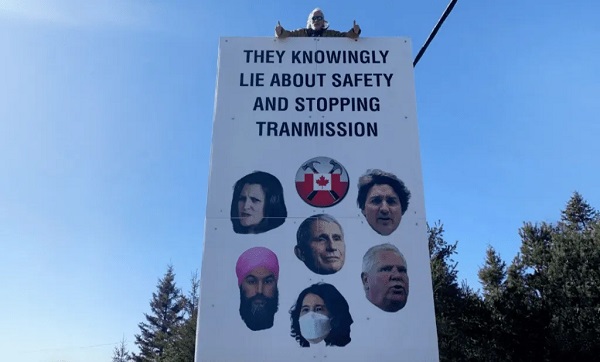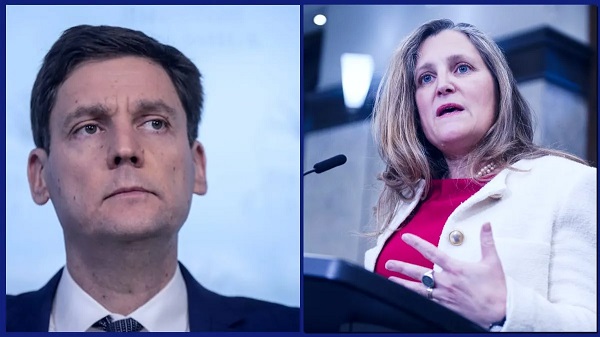Economy
Indigenous band could have been more help, says judge in Wisconsin Line 5 dispute
Fresh nuts, bolts and fittings are ready to be added to the east leg of the pipeline near St. Ignace as Enbridge prepares to test the east and west sides of the Line 5 pipeline under the Straits of Mackinac in Mackinaw City, Mich. on June 8, 2017. North America’s existential debate about the virtues and dangers of oil and gas pipelines faces a critical test today in Wisconsin. THE CANADIAN PRESS/AP, Detroit News, Dale G Young
By James McCarten in Washington
The Indigenous band in Wisconsin that’s trying to shut down the Line 5 pipeline got a chilly reception Thursday from a federal court judge who is dismayed they aren’t doing more to help Enbridge Inc. avoid an ecological disaster.
The Bad River Band of the Lake Superior Chippewa has asked district court Judge William Conley to order the pipeline shut down, fearing that heavy flooding last month could cause the line to spring a leak on their territory.
But from the outset of Thursday’s hearing, it was clear Conley — who ordered the two sides to work together last fall on finding a solution to their impasse — doesn’t believe the band is holding up its end of the bargain.
“The band has not helped itself by refusing to take any steps to prevent a catastrophic failure,” Conley said as the hearing got underway. “You haven’t even allowed simple steps that would have prevented some of this erosion.”
The day-long hearing ended without a decision on the band’s request for an injunction — and with the clear sense Conley is disinclined to grant one. “It’s an extraordinary request to make when the band is doing nothing,” he said.
But band lawyer Riyaz Kanji said he was pleased during an otherwise discouraging day that the judge gave indications he would establish a threshold for erosion damage that would trigger a shutdown.
“Unfortunately, from our point of view, he didn’t set that today — he’s not shutting it down,” Kanji said. “But we will remain hopeful that he will set a standard that will protect the river and its precious resources.”
Conley, who has already ruled that the band was entitled back in 2013 to revoke permission for the pipeline, was also unwilling to grant the injunction on the grounds that Enbridge no longer has the right to access the area.
“The harder thing to hear was that the judge appears unwilling … to issue an injunction because of Enbridge’s continuing trespass on the band’s lands,” Kanji said.
“It sounds like he’s thinking more in terms of financial penalties.”
In court documents, Enbridge has accused the band of being focused on a single outcome: the permanent closure of the pipeline on their territory “while refusing much less extreme alternative measures.”
The band argues that several weeks of flooding along the Bad River last month has washed away so much of the riverbank and supporting terrain that a breach is “imminent” and a shutdown order more than justified.
Enbridge insists the dangers are being overstated — and even if they were real, the company’s court-ordered contingency plan, which spells out the steps it would take, would be a far more rational solution.
“Enbridge will pre-emptively purge and shut down the line well in advance of any potential rupture,” the company says in its court brief, adding that the area remains under constant 24-hour video surveillance.
“Any flooding and erosion has not, and would not, catch Enbridge by surprise.”
But Enbridge has been rebuffed in its efforts to perform remedial work on the site, which would include using sandbacks and trees to fortify the riverbanks — a decision band chairman Mike Wiggins defended Thursday.
The band has the right under federal law to enforce its own water quality standards, which were “developed by careful evaluation of our relationships, as a people, with different parts of our hydrology in the Bad River watershed,” Wiggins told a news conference after the hearing.
“What was kind of put forward today was, ‘None of that stuff should matter. None of that stuff should exist. When Enbridge came knocking, you should have just let them do whatever they want,'” he said.
“We disagree.”
Heavy flooding that began in early April washed away significant portions of the riverbank where Line 5 intersects the Bad River, a meandering, 120-kilometre course that feeds Lake Superior and a complex network of ecologically delicate wetlands.
The band has been in court with Enbridge since 2019 in an effort to compel the pipeline’s owner and operator to reroute Line 5 around its traditional territory — something the company has already agreed to do.
But the flooding has turned a theoretical risk into a very real one, the band argues, and time is now of the essence. Lawyers for the band and its supporters were scheduled to hold a news conference after the hearing.
Line 5 meets the river just past a location the court has come to know as the “meander,” where the riverbed snakes back and forth multiple times, separated from itself only by several metres of forest and the pipeline itself.
At four locations, the river was less than 4.6 metres from the pipeline — just 3.4 metres in one particular spot — and the erosion has only continued.
The neighbouring state of Michigan, led by Attorney General Dana Nessel, has been waging its own war against Line 5, fearing a leak in the Straits of Mackinac, the ecologically delicate waterway where the pipeline crosses the Great Lakes.
“The alarming erosion at the Bad River meander poses an imminent threat of irreparable harm to Lake Superior which far outweighs the risk of impacts associated with a shutdown of the Line 5 pipeline,” Nessel argues in her brief.
“Without judicial intervention, it is likely that this irreparable harm will be inflicted not only on the band, but also on Michigan, its residents, and its natural resources.”
The economic arguments against shutting down the pipeline, which carries 540,000 barrels of oil and natural gas liquids daily across Wisconsin and Michigan to refineries in Sarnia, Ont., are by now well-known.
Line 5’s defenders, which include the federal government, say a shutdown would cause major economic disruption across the Prairies and the U.S. Midwest, where it provides feedstock to refineries in Michigan, Ohio and Pennsylvania.
It also supplies key refining facilities in Ontario and Quebec, and is vital to the production of jet fuel for major airports on both sides of the Canada-U.S. border, including Detroit Metropolitan and Pearson International in Toronto.
A lengthy statement issued Tuesday by the Canadian Embassy warned of severe economic consequences of shutting down the line, as well as the potential ramifications for bilateral relations.
“The energy security of both Canada and the United States would be directly impacted by a Line 5 closure,” the statement said. Some 33,000 U.S. jobs and US$20 billion in economic activity would be at stake, it added.
“At a time of heightened concern over energy security and supply, including during the energy transition, maintaining and protecting existing infrastructure should be a top priority.”
Talks have been ongoing for months under the terms of a 1977 pipelines treaty between the two countries that effectively prohibits either country from unilaterally closing off the flow of hydrocarbons.
This report by The Canadian Press was first published May 18, 2023.
— With files from The Associated Press
Economy
Trump opens door to Iranian oil exports
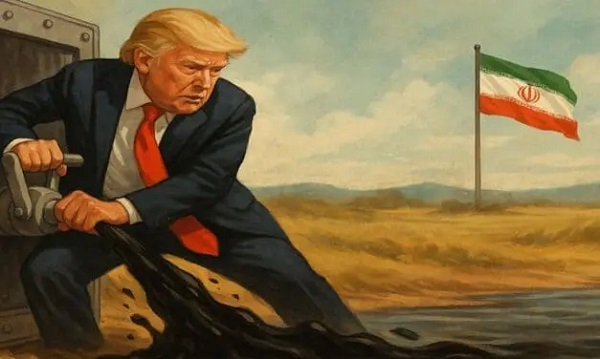
This article supplied by Troy Media.
U.S. President Donald Trump’s chaotic foreign policy is unravelling years of pressure on Iran and fuelling a surge of Iranian oil into global markets. His recent pivot to allow China to buy Iranian crude, despite previously trying to crush those exports, marks a sharp shift from strategic pressure to transactional diplomacy.
This unpredictability isn’t just confusing allies—it’s transforming global oil flows. One day, Trump vetoes an Israeli plan to assassinate Iran’s supreme leader, Ayatollah Khamenei. Days later, he calls for Iran’s unconditional surrender. After announcing a ceasefire between Iran, Israel and the United States, Trump praises both sides then lashes out at them the next day.
The biggest shock came when Trump posted on Truth Social that “China can now continue to purchase Oil from Iran. Hopefully, they will be purchasing plenty from the U.S., also.” The statement reversed the “maximum pressure” campaign he reinstated in February, which aimed to drive Iran’s oil exports to zero. The campaign reimposes sanctions on Tehran, threatening penalties on any country or company buying Iranian crude,
with the goal of crippling Iran’s economy and nuclear ambitions.
This wasn’t foreign policy—it was deal-making. Trump is brokering calm in the Middle East not for strategy, but to boost American oil sales to China. And in the process, he’s giving Iran room to move.
The effects of this shift in U.S. policy are already visible in trade data. Chinese imports of Iranian crude hit record levels in June. Ship-tracking firm Vortexa reported more than 1.8 million barrels per day imported between June 1 and 20. Kpler data, covering June 1 to 27, showed a 1.46 million bpd average, nearly 500,000 more than in May.
Much of the supply came from discounted May loadings destined for China’s independent refineries—the so-called “teapots”—stocking up ahead of peak summer demand. After hostilities broke out between Iran and Israel on June 12, Iran ramped up exports even further, increasing daily crude shipments by 44 per cent within a week.
Iran is under heavy U.S. sanctions, and its oil is typically sold at a discount, especially to China, the world’s largest oil importer. These discounted barrels undercut other exporters, including U.S. allies and global producers like Canada, reducing global prices and shifting power dynamics in the energy market.
All of this happened with full knowledge of the U.S. administration. Analysts now expect Iranian crude to continue flowing freely, as long as Trump sees strategic or economic value in it—though that position could reverse without warning.
Complicating matters is progress toward a U.S.-China trade deal. Commerce Secretary Howard Lutnick told reporters that an agreement reached in May has now been finalized. China later confirmed the understanding. Trump’s oil concession may be part of that broader détente, but it comes at the cost of any consistent pressure on Iran.
Meanwhile, despite Trump’s claims of obliterating Iran’s nuclear program, early reports suggest U.S. strikes merely delayed Tehran’s capabilities by a few months. The public posture of strength contrasts with a quieter reality: Iranian oil is once again flooding global markets.
With OPEC+ also boosting output monthly, there is no shortage of crude on the horizon. In fact, oversupply may once again define the market—and Trump’s erratic diplomacy is helping drive it.
For Canadian producers, especially in Alberta, the return of cheap Iranian oil can mean downward pressure on global prices and stiffer competition in key markets. And with global energy supply increasingly shaped by impulsive political decisions, Canada’s energy sector remains vulnerable to forces far beyond its borders.
This is the new reality: unpredictability at the top is shaping the oil market more than any cartel or conflict. And for now, Iran is winning.
Toronto-based Rashid Husain Syed is a highly regarded analyst specializing in energy and politics, particularly in the Middle East. In addition to his contributions to local and international newspapers, Rashid frequently lends his expertise as a speaker at global conferences. Organizations such as the Department of Energy in Washington and the International Energy Agency in Paris have sought his insights on global energy matters.
Troy Media empowers Canadian community news outlets by providing independent, insightful analysis and commentary. Our mission is to support local media in helping Canadians stay informed and engaged by delivering reliable content that strengthens community connections and deepens understanding across the country.
Alberta
Pierre Poilievre – Per Capita, Hardisty, Alberta Is the Most Important Little Town In Canada
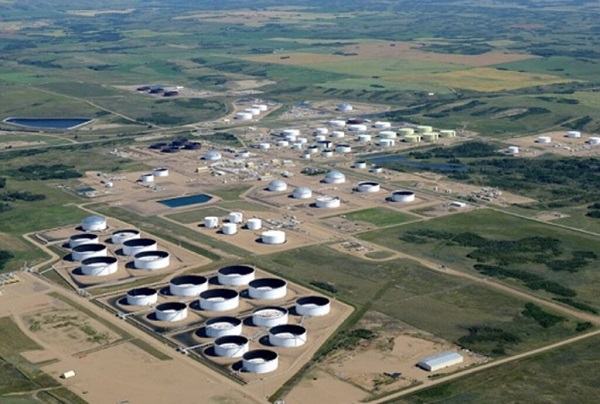
From Pierre Poilievre
-
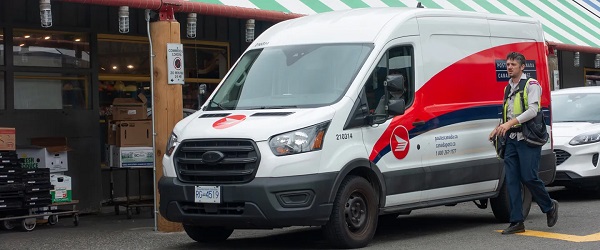
 Business1 day ago
Business1 day agoLatest shakedown attempt by Canada Post underscores need for privatization
-
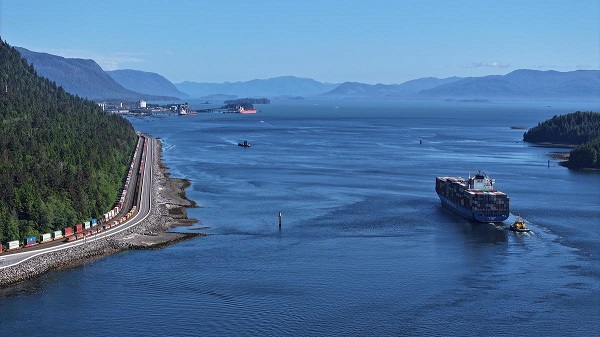
 Business1 day ago
Business1 day agoWhy it’s time to repeal the oil tanker ban on B.C.’s north coast
-
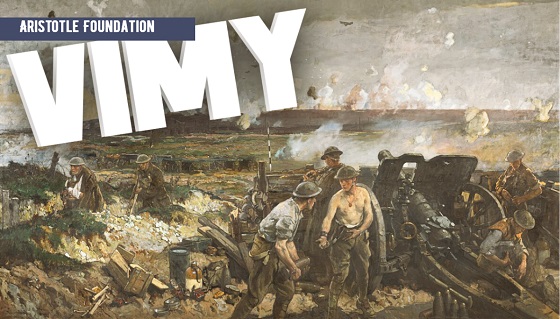
 Aristotle Foundation2 days ago
Aristotle Foundation2 days agoHow Vimy Ridge Shaped Canada
-

 Alberta1 day ago
Alberta1 day agoPierre Poilievre – Per Capita, Hardisty, Alberta Is the Most Important Little Town In Canada
-

 Alberta1 day ago
Alberta1 day agoAlberta Provincial Police – New chief of Independent Agency Police Service
-

 International2 days ago
International2 days agoCBS settles with Trump over doctored 60 Minutes Harris interview
-
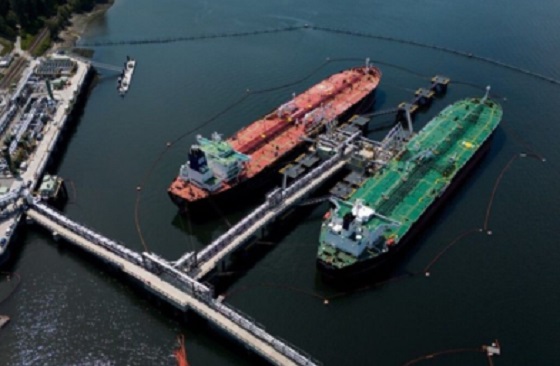
 Energy1 day ago
Energy1 day agoIf Canada Wants to be the World’s Energy Partner, We Need to Act Like It
-

 MxM News1 day ago
MxM News1 day agoUPenn strips Lia Thomas of women’s swimming titles after Title IX investigation




